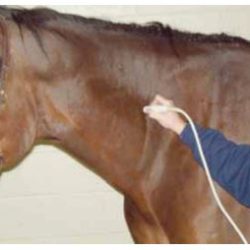How to Perform Sonographic Examination and Ultrasound-Guided Injection of the Cervical Vertebral Facet Joints in Horses.
Introduction. Osteoarthritis of the cervical vertebral facet joints is an uncommon but documented cause of poor performance and lameness in equine athletes. Osteoarthritis of the facet joints generally occurs secondary to normal wear and tear or less frequently, to trauma. Clinical signs include neck stiffness, reluctance to bend the neck in a particular direction, and[…]

